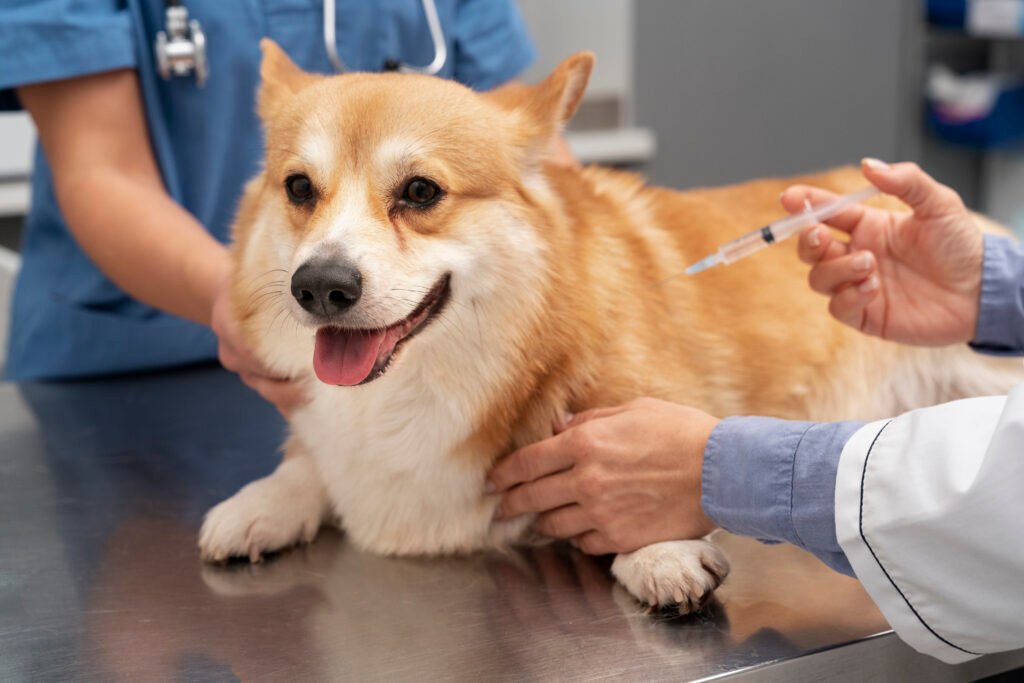
In the world of canine health, one of the most devastating diseases pet owners must watch out for is canine parvovirus. Despite the availability of vaccines, many dogs remain vulnerable due to lack of awareness or incomplete vaccination schedules. This highly contagious disease can survive in the environment for up to a year, making prevention and education crucial for dog owners.
What is Canine Parvovirus?
Canine parvovirus (CPV) is a viral disease that primarily targets the gastrointestinal tract of dogs. Puppies aged 6 weeks to 6 months and unvaccinated dogs are most at risk. The virus spreads through contaminated feces, saliva, vomit, and even indirect contact with food bowls, toys, or surfaces.
How Does Parvo Spread Between Dogs?
Dogs contract parvo by:
- Direct contact with infected dogs or their feces.
- Indirect exposure through contaminated items such as bedding, food, or water bowls.
- Walking on contaminated surfaces like grass, dirt, or concrete.
Because parvo in dogs can survive in the environment for months, it poses a continuous threat to unvaccinated pets.
Symptoms of Parvo in Dogs
Early detection is vital. Common symptoms include:
- Severe, often bloody diarrhea
- Vomiting undigested food or bile
- Loss of appetite and weakness
- High fever (104–106°F)
- Dehydration and lethargy
If your dog shows these signs, immediate veterinary attention is necessary.
Diagnosing Canine Parvovirus
Vets use several diagnostic methods to confirm infection:
- Fecal ELISA Test – Affordable and widely available.
- PCR Test – More accurate, detects parvovirus DNA.
- X-ray/Ultrasound – Helps assess severity and complications.
Treatment for Parvo in Dogs
There is no specific cure, but supportive care greatly improves survival chances:
- Intravenous fluids to combat dehydration.
- Antibiotics to prevent secondary infections.
- Anti-nausea medications to control vomiting.
- Nutritional support with bland diets like boiled chicken and rice.
At home, isolation is essential to stop the spread. Disinfect surfaces using a bleach solution (1 part bleach to 30 parts water).
Importance of Vaccination
The best protection against canine parvovirus is vaccination:
- Puppies should receive doses at 6, 8, and 12 weeks with booster shots.
- Adult dogs need revaccination every 1–3 years.
- High-risk dogs (frequenting kennels, dog parks, or boarding facilities) may need additional boosters.
Vaccination not only protects your dog but also helps prevent community outbreaks.
Survival Rate and Isolation Guidelines
With proper treatment, survival rates for parvo in dogs are around 80–90%. Puppies and immunocompromised dogs remain at higher risk. Even after recovery, dogs should be isolated for at least 2 weeks, as the virus may still shed through feces for up to 10 days.
Can Humans Get Parvo from Dogs?
The good news is canine parvovirus does not infect humans. However, good hygiene is crucial since the virus can survive on human skin for up to 24 hours. Always wash hands and disinfect surfaces after handling a sick dog.
Conclusion
Canine parvovirus is a deadly yet preventable disease. Through awareness, timely vaccination, and early veterinary care, you can protect your furry friend from this life-threatening virus. Don’t wait until it’s too late – vaccinate, stay informed, and safeguard your dog’s health. You can found more info about in on https://www.akc.org/expert-advice/health/canine-parvovirus/.